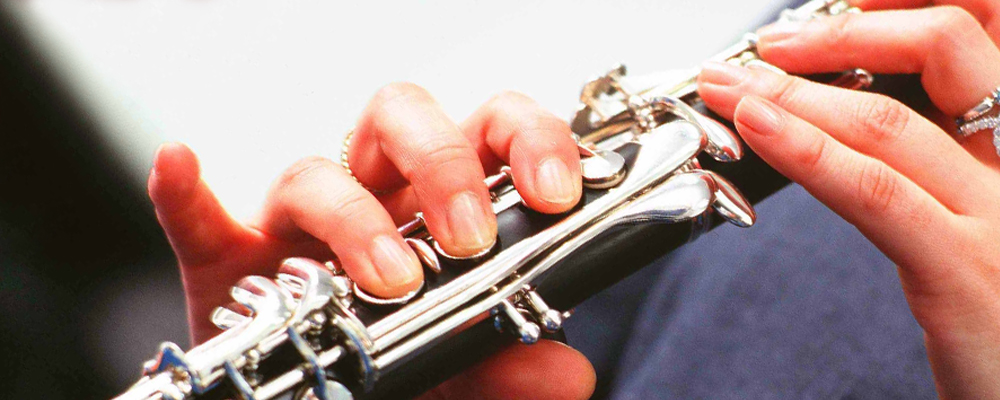How to Play the Clarinet
How to play a clarinet
Assembly
× Do not hold the clarinet by the areas marked with an X shown here when putting it together.
Apply cork grease to the cork portions of the clarinet before putting it together.
Put the reed on the mouthpiece, and line up the ligatures properly before tightening them.
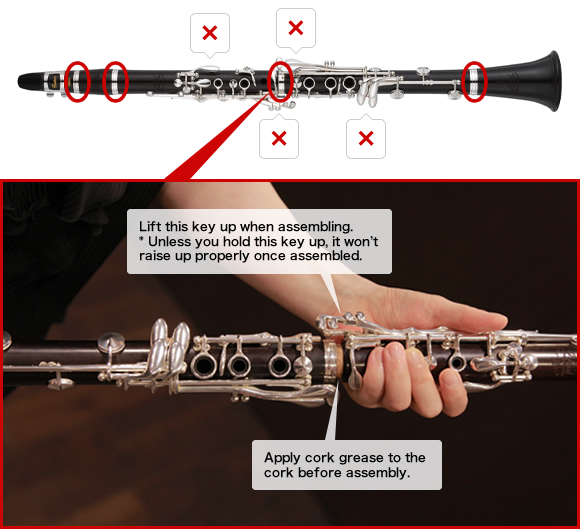
How to hold a clarinet
Relax your shoulders and round your fingers to hold the clarinet naturally.
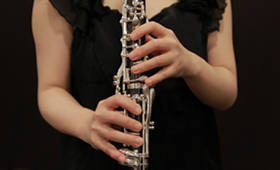
From the front
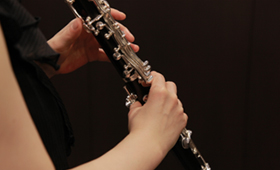
Angle seen from the side
How to use the mouthpiece
Follow these steps for using the mouthpiece:
- Cover your bottom teeth with your bottom lip gently.
- Set the reed on your bottom lip.
- Place your top teeth firmly on the mouthpiece.
- Close your mouth as if you are smiling.
How to create sound
In order to produce good sound, you should blow facing straight forward, without puffing your cheeks out.
Use only the thumb of your right hand to support the instrument, and hold the barrel with your left.
How much of the mouthpiece you put in your mouth and the angle at which you hold the clarinet are important points.
* If you don't put the mouthpiece in your mouth far enough, it will be hard to make any sound. If you put it in too far, the sound can get distorted.
A good angle for holding the clarinet
Too high
Too low
Practice fingering
Once you have mastered holding the clarinet and producing sound, try playing with the fingerings shown below.
When you can play all the notes in this simple scale, try playing while you're looking at the score.
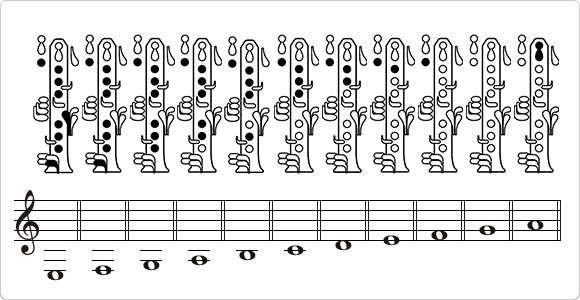

Score for Frère Jacques
Listen to Frère Jacques
How to practice glissando
There are many different ways to practice the glissando technique. We'll introduce just one of them here.
- Begin by playing a B♭, on the second line of the staff.
- Try loosening your mouth while playing this note to, and try to bring it down a major second interval to A♭.
- Keep your mouth just like it is and play a C (on the third space) and return your mouth to normal as you open up the keys by pulling your fingers off.
This method will allow you to play a glissando from C to B♭. Once you learn the basics of this practice routine, you'll be able to learn all kinds of other sounds, too.
How to take care of a clarinet
Use a swab to wipe the moisture out of the inside of the clarinet.
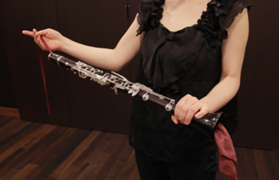
Cleaning with a swab (bell side)
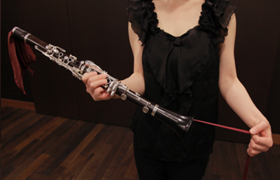
Cleaning with a swab (mouthpiece side)
The purpose of patches and how to use them
If you don't use a patch (sometimes called a cushion), your teeth might sometimes slip where they contact the mouthpiece, it might be harder for your to keep your embouchure (the way you hold your mouth) stable, and your mouthpiece might even get scratched where your teeth touch it. A patch is a small piece of material like a sticker that you can put on your mouthpiece where your teeth touch it in order to avoid these problems. When putting one on, be careful that it doesn't hang over the edge of the mouthpiece.
Musical Instrument Guide:Clarinet Contents
Structure
How the Instrument is Made
Choosing an Instrument
Trivia
- "I Broke My Clarinet" is a French folk song
- Inspiring composers
- In Italy, a single B♭ clarinet
- At one time, most clarinets were made of boxwood
- In vogue in the 1900s-the metal clarinet
- A transparent clarinet?
- Famous clarinet works: concertos
- Famous clarinet works: chamber music
- What is the relationship between hertz and cents?

